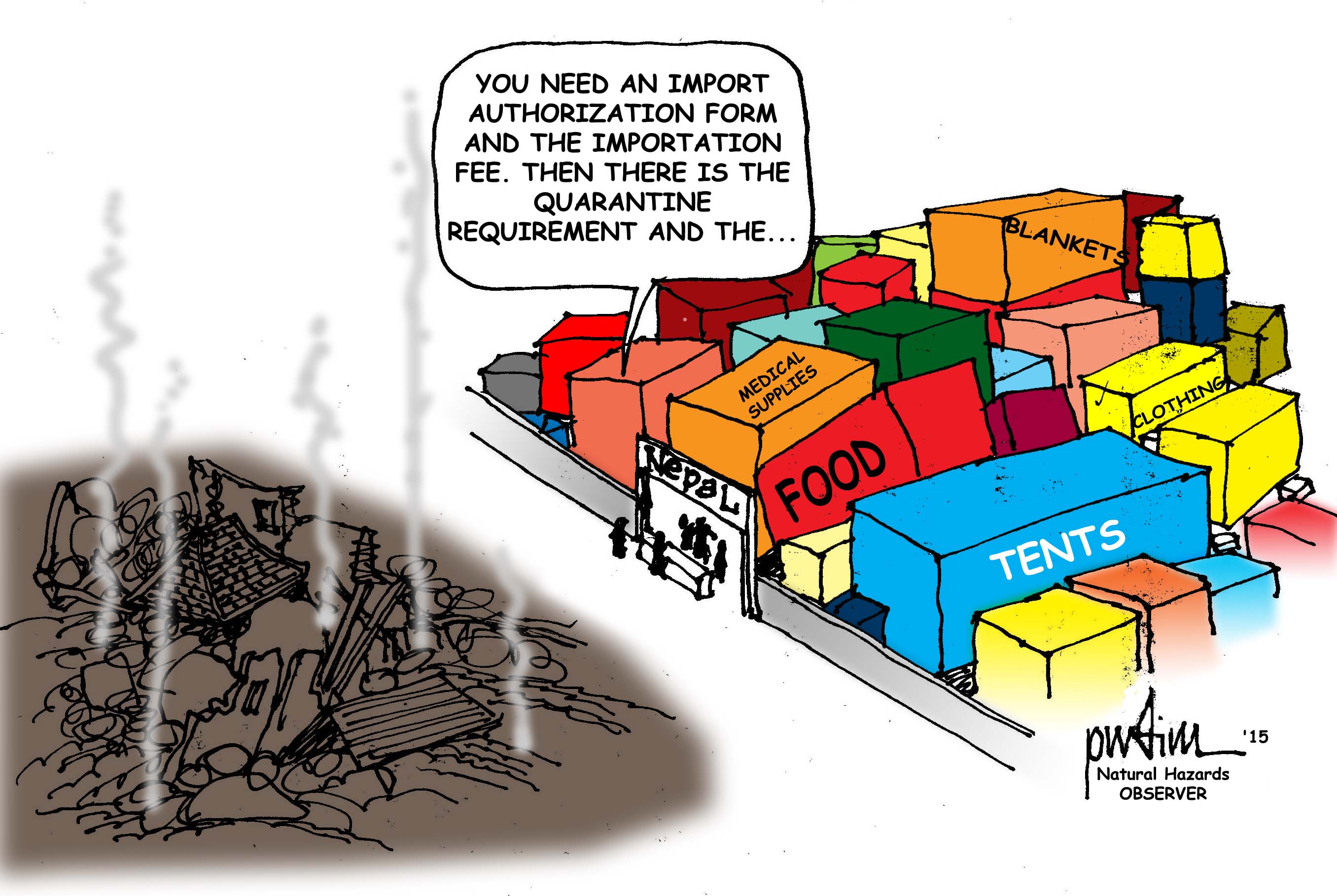
WELCOME TO THE MAY ISSUE of the Observer. This month we focus on the tragic events that have unfolded in Nepal and the surrounding Himalayan states. On April 25, thousands died in a mammoth earthquake. A little over a fortnight later, the region got hit hard again when a second earthquake left 65 dead and nearly 2,000 people injured. The total death toll on May 24 stood at 8,653 and is expected to rise even further as recovery operations continue.
Two of our contributors were in the region when the first earthquake struck. Chandra Prakash Kala, a faculty member at the Indian Institute of Forest Management, was 680 miles away in Bhopal, India, when he felt the tremors. Earthquake hazard researcher Anne Sanquini was in the Nepalese capital when the disaster struck. Kala and Sanquini were both literally and guratively shaken by the event. Kala—who himself grew up in a small Himalayan town and has dedicated his career to researching the ecology of the mountain range— kept a detailed log about the earthquake and its aftermath. Sanquini, although in the midst of chaos, was able to document the devastation around her through word and image. Her account and photographs are harrowing and underline the sheer terror people felt when the earth started to shake.
As news trickled in, it became clear that Nepal was not prepared for a disaster of this caliber. Worsened road conditions, landslides, and rubble from buildings destroyed by the earthquake made it nearly impossible to reach the already isolated mountain villages with relief supplies. Aside from these geographical and infrastructural issues, other—manmade—issues also impeded the distribution of aid. After the first earthquake, Nepalese authorities obstructed international di- saster response efforts by insisting a long list of rules and regulations must be followed, including custom inspections and import taxes. As a result of these bureaucratic bottlenecks, supplies to the survivors piled up at the airport and other border crossings.
Eventually the government relaxed custom requirements somewhat and lifted import taxes on items such as tarpaulin and tents, but the damage was already done and the inadequate disaster response severely delayed emergency relief. Now, with the monsoon season just around the corner, the small window to reach isolated villagers near the epicenter of the earthquake is closing fast. The pending monsoon rains in Central Nepal—typically beginning around mid-June and lasting through mid-September—is likely to cause not only more landslides and widespread flooding, but is also expected to trigger a full-blown public health crisis. Much of the existing water and sanitation infrastructure was severely damaged by the earthquake. In the make-shift encampments that have mushroomed in and around Kathmandu, emergency toilets are over owing and people are using open space to relieve themselves. Heavy rains could wash human waste into drinking water sources and the potential for an outbreak of waterborne diseases like cholera (which is endemic to Nepal) is very high.
Public health isn’t the only concern—a food crisis is also looming. Without adequate shelter for themselves and their harvest displaced farmers cannot return to their land to harvest potatoes and rice and plant wheat ahead of the monsoon. The potential consequences for the country’s food security are severe. This is a daunting forecast for people who are already running out of food.
The Nepalese government has projected that the country needs more than 215,000 tons of food in the next three months and at least a million tents to feed and shelter earthquake victims. Pre-monsoon rains are already hampering relief efforts and it seems like the race against the clock will be lost. Nepal has to brace itself for yet another disaster.
Aside from Kala and Sanquini’s vivid ac- counts of the developments in Nepal, this issue has articles that examine a capitalistic approach to climate change awareness, look at the lack of communication among disaster communicators, and outline seven trends that might help disaster learning.
If there is anything we can learn from Nepal’s earthquake tragedy is that there is a desparate need to improve disaster communication and responses to disaster relief, recovery, and rehabilitation—and for mitigating future catastrophes.
Enjoy your Observer.
Elke Weesjes Sabella is former editor of the Natural Hazards Observer. She joined the staff in December 2014 after a brief stint as a correspondent for a United Nations nonprofit. Under her leadership, the Observer was revamped to a more visual format and one that included national and international perspectives on threats facing the world. Weesjes was the editor of the peer-reviewed bimonthly publication United Academics Journal of Social Sciences from 2010 to 2013.
Weesjes Sabella also worked as a research associate for the Center for Disaster and Risk Analysis, formerly located at Colorado State University (although no longer active). In that role, she collected and analyzed data and translated research findings for a broader audience. She played a central role in finalizing the Disaster Preparedness among Childcare Providers in Colorado project, which examines all-hazards preparedness in daycares and in-home childcare across Colorado. She co-authored the report based on the first stage of the project, which was funded by Region VIII of the Federal Emergency Management Agency.
Weesjes Sabella specializes in cultural memory and neighborhood/community change in times of acute and chronic stress. She has published articles on the impact of drought on farming communities in Kansas, the effects of Superstorm Sandy in Far Rockaway, Queens, urban renewal in the Bedford-Stuyvesant neighborhood in Brooklyn, and health services for vulnerable populations in the South Bronx.
Weesjes Sabella received her PhD from the University of Sussex. Her dissertation, Children of the Red Flag: Growing up in a Communist Family During the Cold War (2012), as well as the majority of her publication record, share the common methodology of understanding culture and identity through oral history.